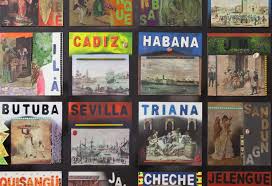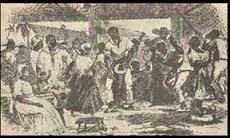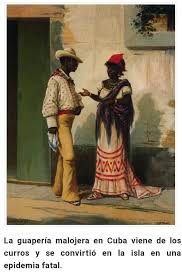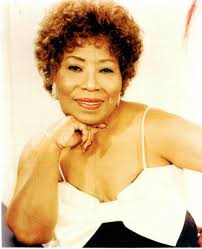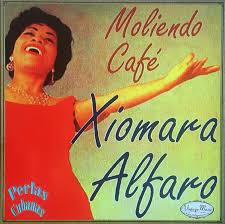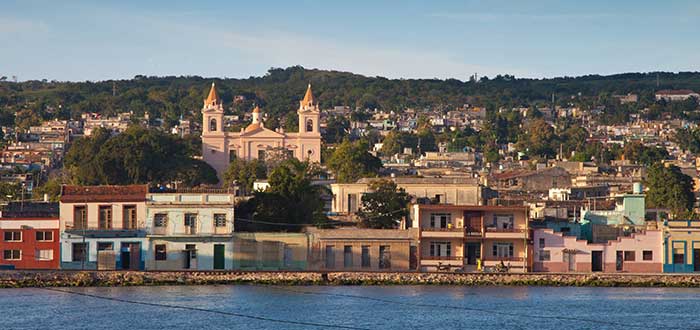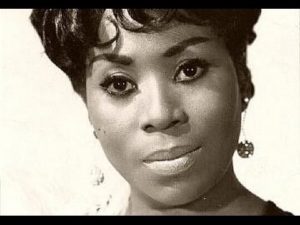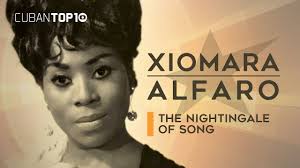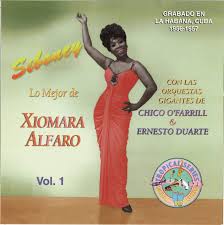 THE SPANISH ANDALUSIANS, AND THE “BLACK CURROS” IN CUBA.PHOTOS.
THE SPANISH ANDALUSIANS, AND THE “BLACK CURROS” IN CUBA.PHOTOS.
On his first trip from Columbus to America, it should be noted that the Pinzón brothers were there (Martín Alonso Pinzón was captain of La Niña, Vicente Yáñez Pinzón was captain of the Pinta and both natives of Palos de la Frontera and the Niño Brothers ( Pedro Alonso Niño was the pilot and Juan Niño was the master and owner of La Niña), the Cordovan surgeon Juan Mestre, the Cadiz Juan de la Cosa, the Sevillian famous for being the first to see land, Rodrigo de Triana, and finally most of those who made the trip were Andalusians.
The Andalusian cultural influence in Cuba was manifested in the use of their work instruments or their fishing gear, their food customs, their agricultural culture, and above all through music, from the ways of saying singing a rhymed verse in the company of instruments of plucked and strummed strings, up to the undeniable relationship between flamenco rumba and Cuban rumba.
Although it may seem like a joke-current, very few are today the Spaniards and Andalusians aware that the first slaves stolen from Africa by the slave traders were not transferred to America, but to Seville itself, these were the “Black Curros”, as he called them Cuban anthropologist Fernando Ortiz.
THE “BLACK CURROS” IN CUBA
In Cuba, apart from calling a lot of people gigs, there is, in particular, the issue of “black Curros”. The “black Curros” were slaves and serfdom in Andalusia since the 15th century and it happened that some were taken to Cuba when their owners went there to try their fortune from the 16th century, being one of the first blacks brought to America.
But already at the beginning of the XIX century, the black Havana Curros, who of course spoke like Andalusians, were the ones that exercised the dominion in the most marginal places of the capital and they were dedicated to gambling businesses, robberies, prostitution, settlement of accounts and in end to any criminal occupation.
They were grouped mainly in the area that today is the Jesús María neighborhood, adjacent to the port and the railway terminal, a historically troubled neighborhood, as well as in the so-called El Canal of the Cerro neighborhood. They were no longer slaves since they had been given the letter of freedom and they were to be feared because they also felt superior to their racial brothers who were still slaves.
They also stood out for their elegant clothing, since they were considered kings of marginality. Something like a Pedro Navajas of his time, some nice Andalusian, but black and living in Cuba.
During the command of Captain-General Tacón, the murders, robberies, and scandals that they caused were frequent, at any time, so the governor took on the task of cleaning the city of these elements, for which military force was used and He was successful in the task, which was aided by other causes, including the emergence, with great force, of secret black religious societies such as the ñáñigos, which some considered linked to Afro-Cuban crime. The black Curros that survived, joined those societies.
When … in a neighborhood where there was a good presence of people of color, the elderly always warned to be careful with sorcerers or santeros, paleros and especially with ñáñigos. Once he knew someone who gave them to himself as ñáñigo or was, the fact is that the guy was kind of abnormal, he always wore necklaces and even a knife on top, but the day he wanted to give someone else a look, he almost took it crying, so I think the ñañiguismo was more famous than anything else. And that his favorite phrase was that he “was ñañigo and did not” suck “or drink soup”. Surely he was a soup kitchen and a “sucker.”
There are many drawings and written testimonies about the “black curros” that show us in detail their particularities, but nevertheless, the black curro in Cuba, which has apparently disappeared, encompasses various human biotypes and various trades such as truck drivers, guagueros, taxi drivers and other costume attributes, gestures and the use of a lexicon loaded with caló, although no longer the Andalusian grace due to transculturation.
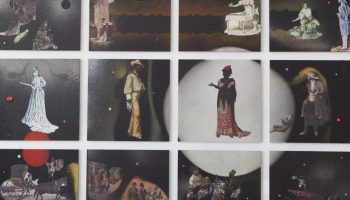 LOS ANDALUCES ESPAÑOLES, Y LOS “NEGROS CURROS” EN CUBA.
LOS ANDALUCES ESPAÑOLES, Y LOS “NEGROS CURROS” EN CUBA.
En su primer viaje de Colón a la América hay que destacar que en él estaban los hermanos Pinzón (Martín Alonso Pinzón era capitán de La Niña, Vicente Yáñez Pinzón era capitán de la Pinta y ambos naturales de Palos de la Frontera y los Hermanos Niño (Pedro Alonso Niño fue en calidad de piloto y Juan Niño maestre y propietario de La Niña), el cirujano cordobés Juan Mestre, el gaditano Juan de la Cosa, el sevillano famoso por ser el primero en avistar tierra, Rodrigo de Triana, y en fin la mayoría de los que hicieron el viaje eran andaluces.
La influencia cultural andaluza en Cuba se manifestó en el empleo de sus instrumentos de trabajo o sus artes de pesca, sus costumbres alimentarias, su cultura agrícola y sobre todo por la música, desde las formas de decir cantando un verso rimado en compañía de instrumentos de cuerda pulsados y rasgados, hasta la innegable relación entre la rumba flamenca y la rumba cubana.
Aunque pueda parecer broma- actual, muy pocos son hoy los españoles y andaluces conscientes de que los primeros esclavos sustraídos de África por los negreros no fueron trasladados a América, sino a la misma Sevilla, estos fueron los “Negros Curros”, como los llamó el antropólogo cubano Fernando Ortiz.
LOS “NEGROS CURROS” EN CUBA
En Cuba, aparte de llamarle curro a mucha gente, está en particular el tema de los “negros curros”. Los “negros curros” fueron esclavos y servidumbre en Andalucía desde el siglo XV y ocurrió que algunos fueron llevados a Cuba cuando sus dueños fueron allá a probar fortuna a partir del siglo XVI, siendo de los primeros negros llevados a América.
Pero ya a principios del siglo XIX, los negros curros habaneros, que por supuesto hablaban como andaluces, eran los ejercían el dominio en los lugares más marginales de la capital y se dedicaban a negocios de juego, robos, prostitución, ajustes de cuentas y en final a cualquier ocupación criminal.
Se agruparon principalmente en la zona que hoy es el barrio de Jesús María, contiguo al puerto y a la terminal de ferrocarriles, un barrio históricamente conflictivo, al igual que en el llamado El Canal del barrio del Cerro. Ya no eran esclavos, pues les habían dado la carta de libertad y eran de temer, porque además se sentían superiores a sus hermanos de raza que seguían siendo esclavos.
Se destacaron además por su vestimenta elegante, ya que se consideraban reyes de la marginalidad. Algo así como un Pedro Navajas de su época, unos majos andaluces, pero negros y viviendo en Cuba.
Durante el mandado del capitán general Tacón los asesinatos, robos y escándalos que provocaron eran frecuentes, a cualquier hora, por lo que el gobernador se dio a la tarea de limpiar la ciudad de esos elementos, para lo que se empleó la fuerza militar y se logró un éxito en la tarea, la que estuvo ayudada por otras causas, entre ellas la aparición, con mucha fuerza, de sociedades secretas negras religiosas como los ñáñigos, que algunos consideraban vinculadas a la delincuencia afrocubana. Los negros curros que subsistieron, se sumaron a esas sociedades.
Cuando .. en un barrio donde existía una buena presencia de personas de color, los mayores siempre alertaban de tener cuidado con los brujos o santeros, los paleros y sobre todo con los ñáñigos. Una vez conocía a uno que se las daba de ñáñigo o lo era, el hecho es que el tipo era medio anormal, siempre andaba con collares y hasta un cuchillo encima, pero el día que le quiso echar guapería a otro, por poco se echa a llorar, así que pienso que el ñañiguismo era más fama que otra cosa. Y eso que su frase preferida era que él “ era ñañigo y no “mamaba” ni tomaba sopa”. Seguramente que era sopero y “mamador”.
Existen muchos dibujos y los testimonios escritos sobre los “negros curros” que nos muestran en detalle sus particularidades, pero sin embargo, el negro curro en Cuba, que aparentemente ha desaparecido, abarca diversos biotipos humanos y varios oficios como camioneros, guagueros, taxistas y otros atributos de vestuario, gestos y el empleo de un léxico cargado de caló, aunque ya sin la gracia andaluza por la transculturación.
Agencies/ MemoriasCubanas/ Carlos RodriguezB./ Internet Photos/ Arnoldo Varona/ www.TheCubanHistory.com
THE CUBAN HISTORY, HOLLYWOOD.



